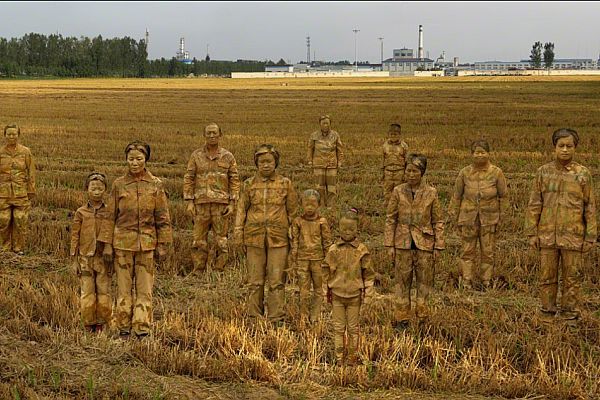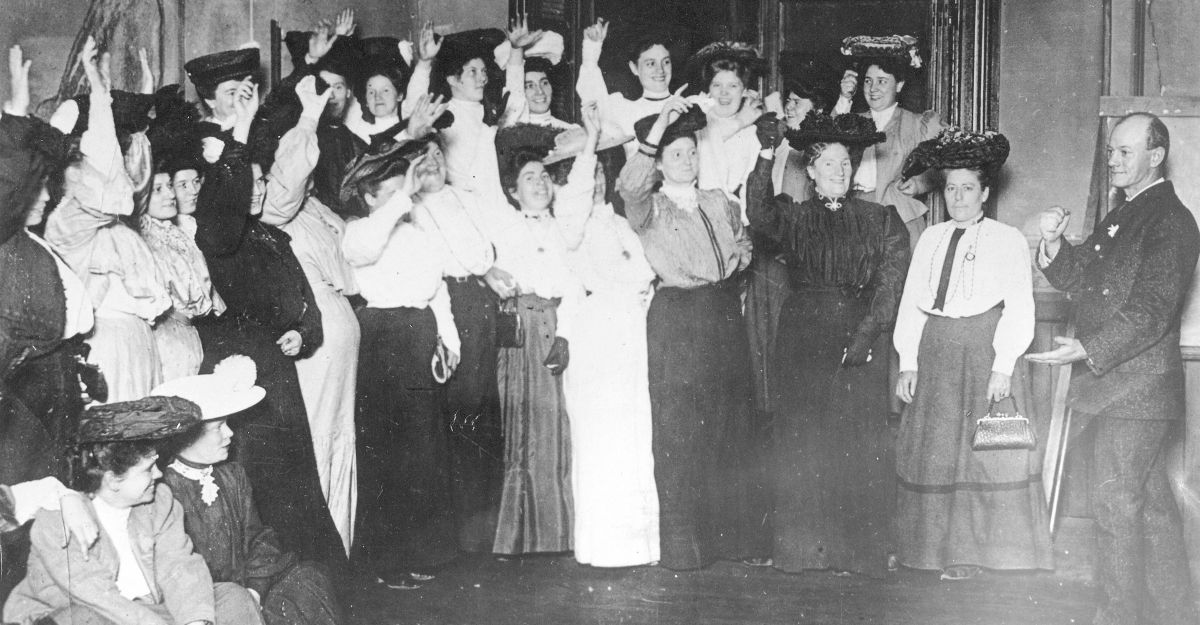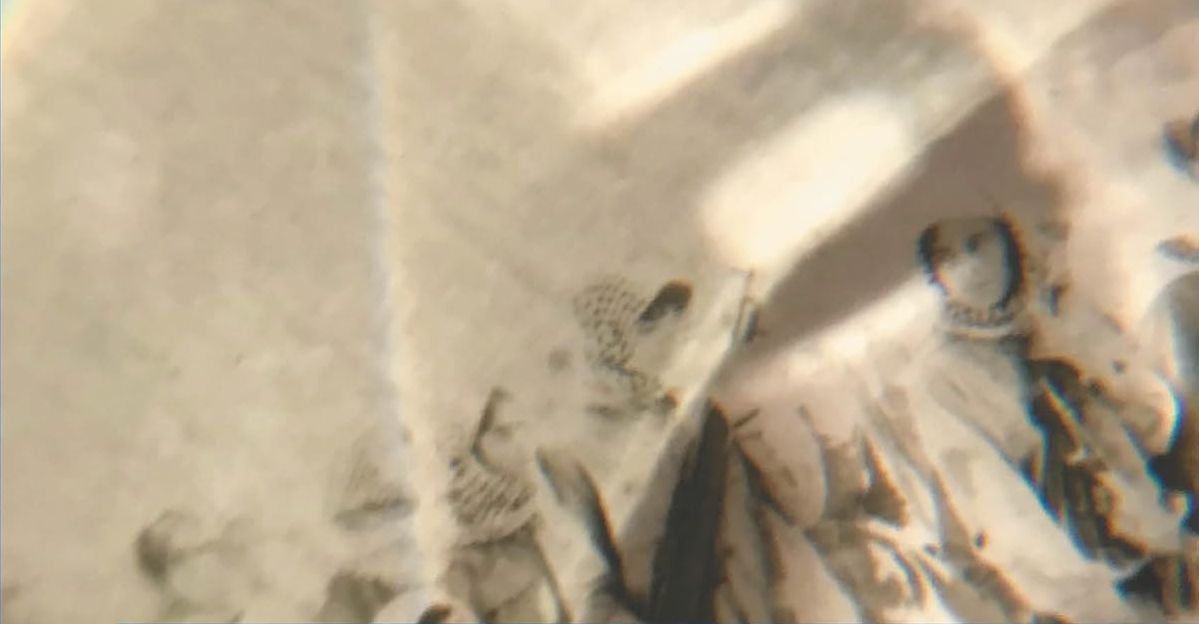Ballarat’s International Foto Biennale hosts dozens of photographic exhibitions spread throughout the significantly preserved nineteenth-century provincial city centre. Going to this festival offers one an excuse to both escape from congested Melbourne and to visit the heritage precinct of a gold rush town. You’ll find exhibitions tucked away in the Mining Exchange, the Town Hall, the Post Office Gallery, the Botanic Gardens, the Trades Hall, and in numerous cafes, public open spaces and shopping centres scattered throughout the town.
The drawcard, however, is inarguably Liu Bolin’s exhibition Camouflage showing at the Art Gallery of Ballarat. So different from the art spaces we’ve come to expect in Melbourne – typified by engorged, spectacular architecture found, for instance, at the Australian Centre for Contemporary Art or The Ian Potter Centre at Federation Square – the building is so unassuming you almost walk right past it, as though it were another pretty façade shaved off and repurposed as a multiplex or microbrewery. In fact, it is Australia’s oldest regional art gallery and is certainly worth a visit for its architecture alone.
*
Born in Shandong province in 1973 but now based in Beijing, Liu is known as ‘the invisible man’ because he hides in his work. In the portraits on display in Camouflage, bodies, intricately painted, retreat into the scenery as though they were subsumed by colour and perspective and shadow. When you look at the works closely though, you begin to see that the body is subsumed not so much by its background but rather by the overbearing narratives that collectively consume us, which Liu is intent on representing. He wants his work to ‘record the issues and challenges faced by our generation’. Judging by his portraits, he sees these issues as invariably dominated by over-consumption, social injustice, and environmental degradation. He writes, ‘I put my thinking of the whole of the society and my view of the entire world into my artworks’.
It’s clear that the body is central to Liu’s work. It is both canvas and political commentary, and it speaks to the tensions between visibility and invisibility in rapidly urbanising and depleting landscapes. ‘By making myself invisible’, Liu says, ‘I try to explore and question the contradictory and often inter-cancelling relationship between our civilisation and its development’. Some have even called him the artist of the Anthropocene.
I can’t help thinking that his work is more spectre than camouflage.
In each photograph Liu’s body is haunting with its soft face and rippling contours of coat and pants that never quite vanish into the surroundings. There is no explicit conjuring away of corporeality. In fact, in his more evocative pieces, it seems essential that the appearance of flesh remains so that the body can remind us of the exchange that occurs between being and economic development – livelihood replaced by a coal pile, by underground escalators, by a wall of instant noodles. ‘I decided to vanish into the world around me,’ Liu explains, ‘some say I disappeared into the landscape; I say that the environment took hold of me.’
In all of the fifty-five works presented in Camouflage, these traces of corporeality remain. The portraits depict the present absence of certain peoples. In this sense, Liu gifts the viewer with a visible invisibility, an apparition, a disappearance. His feet often poke out of the scene with shoes clumsily painted, as though reminding us of fragility, of bones and soles and faux leather and laces – these things which we know as human.
Over fourteen years, and the creation of some two hundred ‘camouflage installations’, Liu’s visible invisibility is as though haunted by a spectral absence. Jacques Derrida wrote in Spectres of Marx: ‘For the ghost, there must be a return to the body, but to a body that is more abstract than ever.’ It is this ghostly abstraction that Liu achieves in his work. It makes us ask the question: how do we reckon with what progress has rendered ghostly? How do we reckon with all this spectral absence that accompanies development?
‘Human beings seem to have forgotten that they need to think how to survive’, argues Liu, ‘What disappears with death is the human body, but what is slowly weakened by rushed economic development is the human spirit.’
In Camouflage, Liu hides amongst helium balloons, shelves of glossy magazines and racks of machine guns. He hides in the subway, in piles of tangled landfill, in half demolished buildings and in polluted rivers. One piece, titled The Hope, shows Liu camouflaged amongst a rickety wooden fishing trawler, strakes of the hull painted across his torso, his head lost to the dark interior of the cabin. Liu has said of this piece: ‘…the migrants disappear in front of the hell that ferried them to Italy. It’s clear that their disappearance refers to the evanescent line between life and death.’
In 2015, in the single deadliest shipwreck involving migrants traversing the Mediterranean, eight hundred asylum seekers died trying to reach the Catania port in search of refuge. Behind the boat, which is ached and worn and could be a prop for a film-set, we glimpse the dockside gantry crane which moves the cargo that effortlessly navigates a global economy.
In some of the photographs, there are other bodies, not Liu’s, groups of them. These are affected bodies: those that have been harmed or abandoned, those that have had to witness quietly or not, from the margins, their own erasures. They too become subsumed in their landscapes – these sceneries of development, of consumerism and destruction. These landscapes represent the heady allure of progress that inflicts violence on those hardly visible bodies, on those disposable bodies.
One photograph, titled Cancer Village, shows some two dozen bodies in a yellow field of a recently harvested crop, the stubble rigid at their shins. Children are amongst them. All have eyes shut. In the background we see a curtain of industry, and now we understand the field as contaminated, as an exclusion zone. The bodies are infected.
In his artist statement, Liu writes: ‘The last three thousand years of human civilisation seem to illustrate that human beings develop in the destruction of their environment and in the exploitation of others.’
As part of his visit to Australia to launch the Ballarat International Foto Biennale, Liu orchestrated a live performance at the Royal Exhibition Building in Carlton Gardens. He stood for six hours in front of the impressive roundabout which marks the entry to the building, His team patiently applying paint to his clothes and face so that he could blend in with the World Heritage listed building and its surrounds. The Royal Exhibition building is internationally recognised as the site of Australia’s first Federal parliament in 1901 and also as the place where the Australian National flag was first flown.
The panel beside this portrait, hanging in the final room of the exhibition, states ‘shifting in and out of perception Liu Bolin’s presence (or absence) here, hints at the presence (or absence) of Aboriginality in this conspicuous public space.’
We know that the Aboriginal community have strong connections with Carlton Gardens, particularly the Moreton Bay fig in the south-east area opposite Gertrude Street which is recognised as a site of significance. This was a prominent meeting and gathering place for the Aboriginal community in inner Melbourne before and during the Second World War.
There are obvious parallels here with the ongoing battle to protect Djap Wurrung sacred trees slated for destruction to enable the duplication of the Western Highway between Buangor and Ararat. A particular version of progress is being brought to the fore, whilst simultaneously centuries of cultural significance are being foreclosed. The disposability of Aboriginal peoples, of their histories and stories, is again being offered in exchange for development as determined by the dominant narrative, where exploitative excess reigns.
When looking through Liu’s lens, it’s not hard to start searching for the spectral absences that haunt this country. His work urges us to be diligent in seeing, in cautiously determining what and who deserve our ethical concern in the affronting yet normalised landscapes we occupy in an urbanising world.
Camouflage runs until 20 October.




